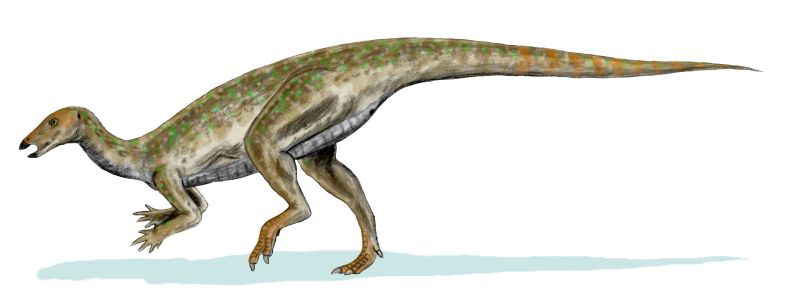The ability of chameleons to change their skin color has fascinated humans for centuries. These remarkable reptiles can shift their hues to communicate, regulate body temperature, and camouflage themselves from predators. Given that dinosaurs were also reptiles, albeit often much larger ones, a natural question arises: could dinosaurs change color like chameleons? Recent paleontological discoveries and advances in technology have begun to shed light on dinosaur coloration, challenging our traditional views of these prehistoric creatures. While we once could only speculate about dinosaur colors based on modern reptiles, new scientific techniques are now allowing us to peek into the colorful world of these ancient animals.
The Science of Color Change in Modern Reptiles
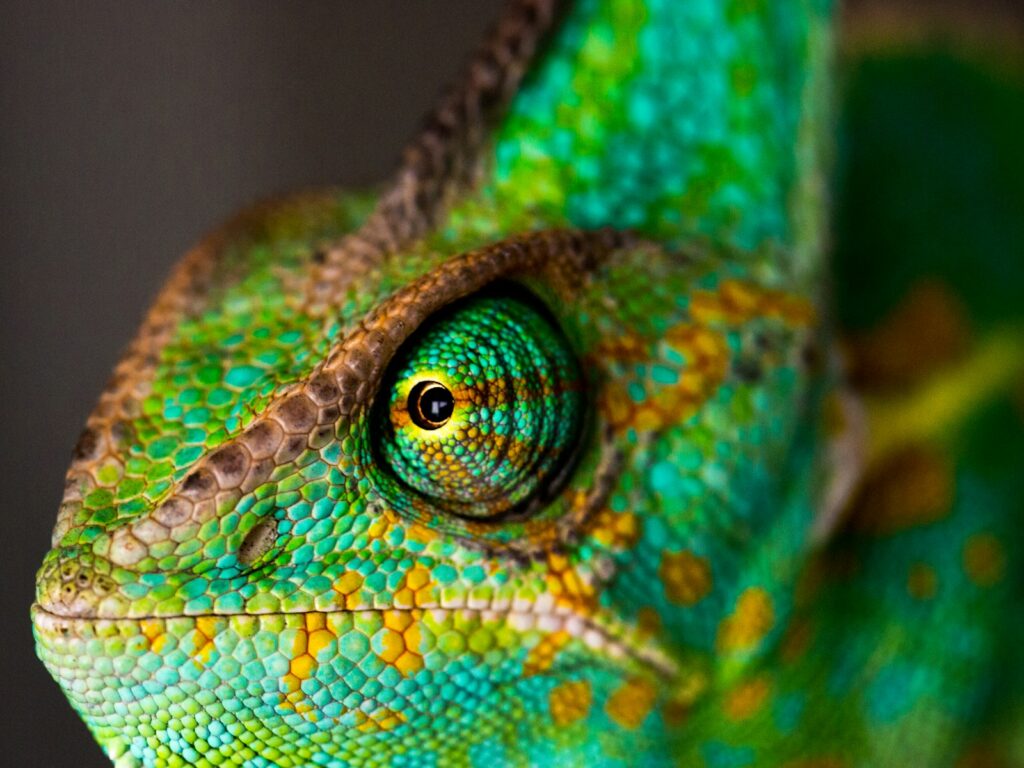
To understand if dinosaurs could change colors, we must first examine how modern reptiles like chameleons accomplish this feat. Chameleons possess specialized cells called chromatophores that contain pigments and can expand or contract to reveal different colors. These cells exist in several layers beneath the skin and work in concert to produce various color combinations. The process is controlled by the animal’s nervous system and hormones, allowing relatively rapid color changes in response to environmental or emotional stimuli. Other reptiles like certain lizards and snakes also possess chromatophores, though their color-changing abilities are typically less dramatic than those of chameleons. These specialized cells represent an evolutionary adaptation that has proven beneficial for survival in specific ecological niches.
Fossil Limitations and Recent Breakthroughs

For most of paleontological history, scientists faced a significant challenge: fossilization typically preserves bone structure but rarely preserves soft tissues like skin. This limitation made determining dinosaur coloration extremely difficult, as color is primarily a characteristic of soft tissues. However, in recent decades, exceptional fossil discoveries have occasionally preserved traces of skin, feathers, and even microscopic structures called melanosomes that contain melanin, a common pigment. These rare finds have revolutionized our understanding of dinosaur appearance. Using sophisticated techniques like scanning electron microscopy and mass spectrometry, researchers can now analyze the shape, size, and chemical composition of these preserved melanosomes. By comparing them to those found in modern animals, scientists can make increasingly accurate inferences about dinosaur coloration.
Evidence of Color in Dinosaur Fossils

Several groundbreaking studies have revealed evidence of color in various dinosaur species. In 2010, researchers analyzing the fossilized feathers of Sinosauropteryx, a small theropod dinosaur from China, discovered melanosomes indicating a reddish-brown coloration with distinctive banding patterns on its tail. Similar studies of Anchiornis, a small, four-winged dinosaur, revealed a complex pattern of black, white, and reddish-brown feathers, giving it a woodpecker-like appearance. The duck-billed hadrosaur Edmontosaurus has been found with preserved skin impressions showing different textures and possible color variations across its body. These discoveries represent significant breakthroughs in paleontology, providing glimpses into the actual appearance of animals that lived millions of years ago. While such evidence doesn’t directly prove color-changing abilities, it establishes that dinosaurs were indeed colorful creatures.
Structural Colors in Dinosaur Feathers

Beyond simple pigmentation, some dinosaurs may have displayed structural colors—hues produced not by pigments but by the physical structure of features like feathers or scales. Modern birds, the direct descendants of theropod dinosaurs, frequently display iridescent feathers whose colors shift depending on the viewing angle. This iridescence results from microscopic structures that refract light in complex ways. In 2016, researchers discovered evidence of such structures in the feathers of Microraptor, a crow-sized dinosaur that lived about 120 million years ago. These feathers appear to have been iridescent black, similar to those of modern crows and ravens. The presence of structural coloration in dinosaurs suggests a sophisticated visual display system, though it differs fundamentally from the active color-changing mechanism found in chameleons.
The Evolutionary Purpose of Dinosaur Coloration

Color plays a crucial role in animal behavior and survival, and dinosaurs were likely no exception. Bright colors often serve as sexual displays, helping animals attract mates by signaling their health and genetic fitness. Camouflage coloration helps animals hide from predators or stalk prey more effectively. Warning coloration can signal toxicity or other defenses to potential predators. Studies of dinosaur coloration patterns suggest they served similar purposes. For instance, Psittacosaurus, a small horned dinosaur, shows evidence of countershading—darker coloration on top and lighter underneath—a common camouflage strategy in modern animals. The elaborate feather patterns of dinosaurs like Anchiornis may have functioned as sexual displays. Understanding the purpose of coloration provides clues about dinosaur behavior and ecology, offering glimpses into their complex social and predator-prey interactions.
Anatomical Requirements for Color Changing
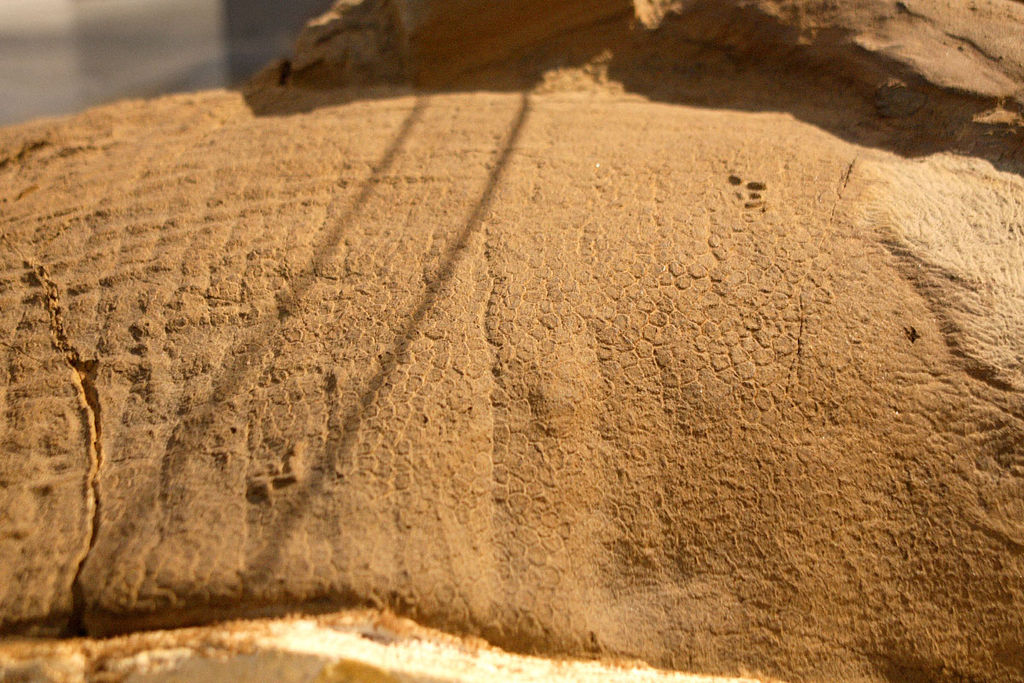
Active color change, as exhibited by chameleons, requires specific anatomical features that may or may not have been present in dinosaurs. Most crucially, it depends on specialized chromatophores arranged in multiple layers beneath the skin. The animal must also possess neural pathways and hormonal systems capable of rapidly controlling these cells. Evidence for such specialized structures in dinosaurs remains elusive in the fossil record. Most preserved dinosaur skin impressions show scales similar to those of modern reptiles, though the microscopic details that would reveal chromatophores are rarely preserved. Without direct evidence of these specialized cells, scientists cannot conclusively determine if dinosaurs possessed the anatomical requirements for active color change. However, the absence of evidence doesn’t necessarily mean these features were absent—it may simply reflect the limitations of fossilization.
Comparing Dinosaurs to Their Modern Relatives

Looking at the closest living relatives of dinosaurs provides another avenue for exploring potential color-changing abilities. Birds, which evolved directly from theropod dinosaurs, generally cannot change color rapidly like chameleons, though some birds can make subtle adjustments to feather appearance by controlling feather position. Crocodilians, the other living archosaur group closely related to dinosaurs, possess limited color-changing abilities—some species can lighten or darken their skin slightly over time. The absence of dramatic color-changing abilities in these modern relatives suggests such capabilities may not have been common among dinosaurs either. However, this comparative approach has limitations, as dinosaurs were incredibly diverse and may have evolved unique adaptations not present in their surviving relatives.
The Case for Color-Changing Dinosaurs

Despite the lack of direct evidence, several factors suggest some dinosaurs might have possessed color-changing abilities. Many dinosaurs lived in environments with seasonal changes, where adaptive coloration would provide significant advantages. Smaller dinosaur species, particularly those vulnerable to predation, would have benefited from camouflage capabilities. The discovery of remarkably preserved skin impressions from some hadrosaurs shows complex patterns of scales and skin structures that could potentially have housed chromatophores. Furthermore, given the extraordinary diversity of dinosaurs across 165 million years of evolution, it seems plausible that some lineages might have independently evolved color-changing mechanisms. The presence of feathers in many dinosaur groups also offered potential for color display and modification, though through different mechanisms than those used by chameleons.
Technological Advances in Paleocoloration

Cutting-edge technologies continue to revolutionize our understanding of dinosaur coloration. Synchrotron radiation techniques allow scientists to detect trace elements associated with different pigments in fossilized tissues without damaging the specimens. Scanning electron microscopy reveals the three-dimensional structure of preserved melanosomes, providing clues about original coloration. Chemical analysis of fossil feathers can identify molecular signatures of different pigments, even after millions of years. These technological advances have transformed paleontology from a field that could only speculate about dinosaur colors to one that can provide increasingly detailed reconstructions based on empirical evidence. As these technologies continue to improve, our picture of dinosaur coloration will become increasingly refined, potentially revealing evidence of color-changing capabilities if they existed.
Unique Color Adaptations in Different Dinosaur Groups
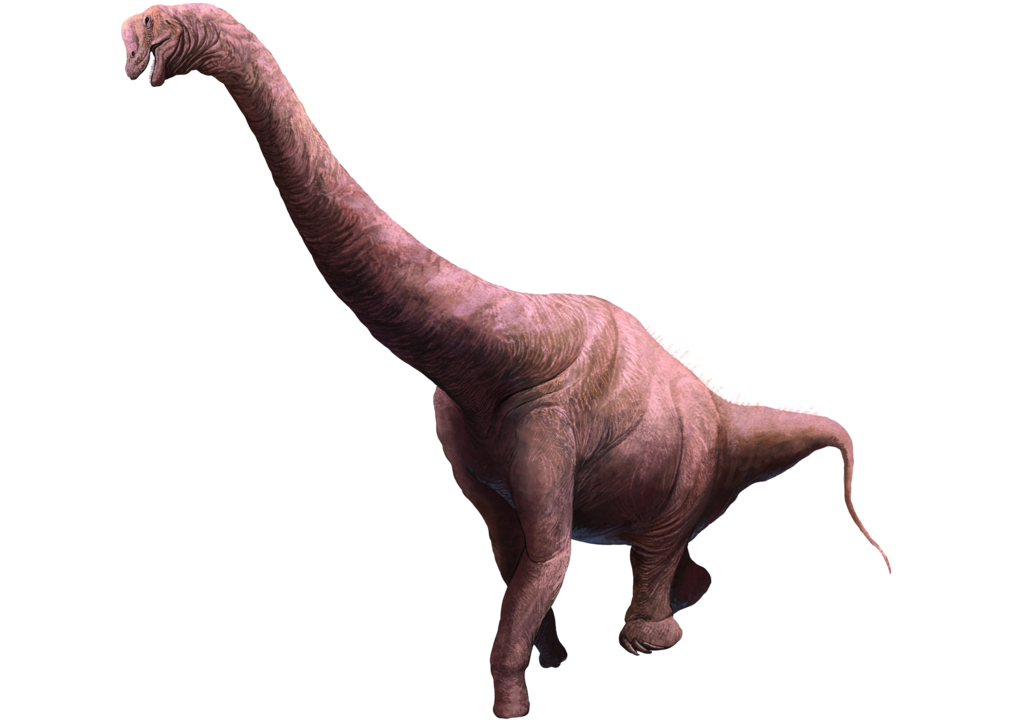
Different dinosaur lineages likely evolved varied approaches to coloration based on their ecological niches and evolutionary histories. Large sauropods, with their massive bodies and few predators as adults, might have had little need for camouflage, possibly sporting simple coloration patterns. Small, bird-like theropods, especially those with feathers, could have displayed complex color patterns for camouflage and social signaling, similar to modern birds. Ceratopsians, with their elaborate frills and horns, may have used bright colors on these structures for species recognition and mating displays. Aquatic and semi-aquatic dinosaurs might have evolved countershading similar to modern marine animals. This diversity of potential color adaptations reflects the remarkable variety of dinosaur forms and lifestyles. While we cannot yet determine which, if any, possessed chameleon-like abilities, the range of color adaptations was likely just as diverse as the dinosaurs themselves.
The Role of Thermoregulation in Dinosaur Coloration

Beyond camouflage and display, coloration plays an important role in thermoregulation for many modern animals, including some color-changing species. Darker colors absorb more heat, while lighter colors reflect it—a principle that could have been crucial for dinosaurs. Evidence suggests many dinosaurs were mesotherms with metabolisms between those of modern reptiles and mammals, potentially making external heat regulation important. Some paleontologists hypothesize that certain dinosaurs might have been able to lighten or darken their skin to help regulate body temperature in different conditions. The large bodies of many dinosaur species presented significant thermoregulatory challenges, and adaptive coloration could have provided an advantage. Desert-dwelling species might have benefited from the ability to lighten their skin during intense heat, while those in cooler environments could have darkened to absorb more solar radiation.
Future Research Directions
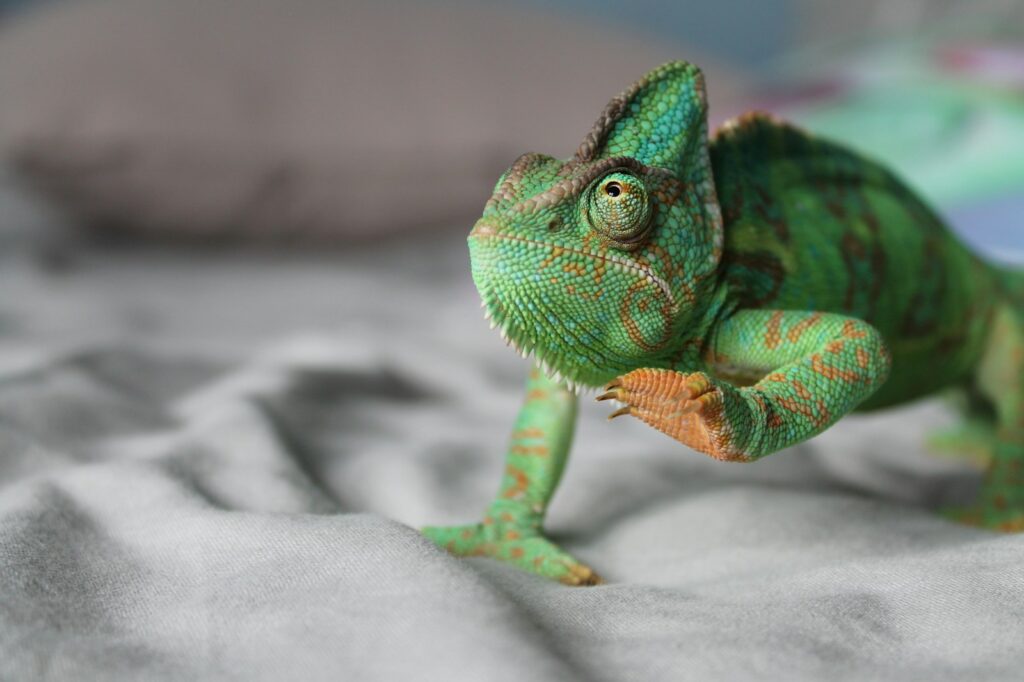
The question of color-changing dinosaurs remains open, with several promising research avenues that may eventually provide more definitive answers. New fossil discoveries, particularly from exceptional preservation sites like those in China’s Liaoning Province, continue to yield specimens with preserved soft tissues. Advanced chemical analysis techniques may detect the remnants of specialized chromatophore cells if they were present in dinosaur skin. Comparative studies examining the genetic basis for color change in modern reptiles could potentially identify genetic signatures that might be detectable in well-preserved dinosaur remains. Experimental studies reconstructing dinosaur skin based on fossil evidence might reveal whether the physical structures necessary for color change could have existed. These multi-disciplinary approaches represent the cutting edge of paleontological research, combining traditional fossil studies with molecular biology, genetics, and bioengineering.
Conclusion: The Colorful Mystery of Dinosaurs
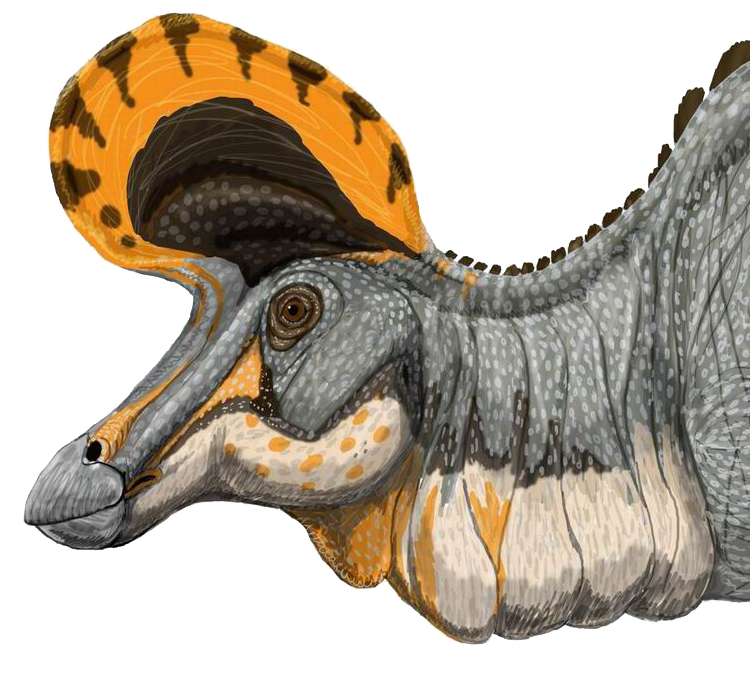
While the question of whether dinosaurs could change color like chameleons remains without a definitive answer, the evidence suggests a nuanced conclusion. Some dinosaur species may have possessed limited abilities to change their coloration over time, perhaps for seasonal camouflage or thermoregulation, though probably not with the rapid versatility of modern chameleons. The discovery of complex coloration patterns in many dinosaur species indicates these animals were far more visually striking than traditionally depicted. As paleontological techniques continue to advance, we may eventually discover direct evidence of color-changing capabilities in certain dinosaur lineages. What remains clear is that dinosaurs were not the dull, monochromatic creatures portrayed in older reconstructions, but vibrant, colorful animals that used visual signals for many of the same purposes as modern wildlife. The colorful world of dinosaurs continues to emerge from the fossil record, challenging our perceptions and deepening our appreciation for these remarkable ancient creatures.

